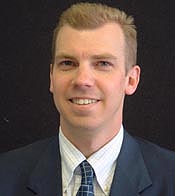Summary
Definition
History and exam
Key diagnostic factors
- poor sleep
- daytime impairment
- periodic limb movements (mostly legs)
Other diagnostic factors
- age >70 years
- re-enactment of dreams during the night
- irresistible urge to move legs, and abnormal sensations in lower limbs
- snoring
- early-morning dry mouth
- headache
- elevated body mass index
- withdrawal from benzodiazepines or barbiturates
- use of antipsychotics
- use of dopaminergic drugs
- pallor
- iron deficiency
- diabetes mellitus
- spinal cord injury
- episodes of sudden onset of sleep during the day; may or may not be associated with loss of muscle tone
Risk factors
- age >70 years
- female sex
Diagnostic investigations
1st investigations to order
- polysomnography: electromyography (EMG) evaluation of limb movements
- polysomnography: electroencephalogram (EEG) evaluation
- polysomnography: assessment of sleep-related breathing disorders
- CBC
- serum ferritin
- BUN
Investigations to consider
- actigraphy
Treatment algorithm
primary (idiopathic) PLMD
PLMD associated with other conditions
Contributors
Authors
Tim Soane, BMBS (Hons), MSci, MRCP (Edin), PhD
Neurology Registrar
Department of Clinical Neurosciences
Western General Hospital
Edinburgh
UK
Disclosures
TS has been reimbursed for attending conferences by Biogen, Roche, and Novartis.
Suvankar Pal, BSc (Hons), MBBS (Dist), MRCP (UK), MD (Res), PGCME, FHEA

Consultant Neurologist and Honorary Senior Lecturer
Department of Clinical Neurosciences
Western General Hospital
Edinburgh
UK
Disclosures
SP declares that he has no competing interests.
Richard Davenport, DM, FRCP Edin

Consultant Neurologist and Honorary Senior Lecturer
Department of Clinical Neurosciences
Western General Hospital
Edinburgh
UK
Disclosures
RD declares that he has no competing interests.
Peer reviewers
Paul Reading, MBBS
Consultant Neurologist
James Cook University Hospital
Middlesbrough
UK
Disclosures
PR declares that he has no competing interests.
Karl Doghramji, MD
Director
Sleep Disorders Center
Thomas Jefferson University Hospital
Philadelphia
PA
Disclosures
KD is a speaker for Sanofi-Aventis, King Pharmaceuticals, Takeda Pharmaceuticals, Sepracor, and Pfizer; a consultant for Sanofi-Aventis, Takeda Pharmaceuticals, Sepracor, Pfizer, and Neurocrine Biosciences; and has stock in Merck.
Kirstie Anderson, BMedSci, MBBS, MRCP, DPhil
Consultant Neurologist
Department of Neurology
Freeman Hospital
Newcastle upon Tyne
UK
Disclosures
KA declares that she has no competing interests.
Peer reviewer acknowledgements
BMJ Best Practice topics are updated on a rolling basis in line with developments in evidence and guidance. The peer reviewers listed here have reviewed the content at least once during the history of the topic.
Disclosures
Peer reviewer affiliations and disclosures pertain to the time of the review.
References
Key articles
Garcia-Borreguero D, Ferini-Strambi L, Kohnen R, et al. European guidelines on management of restless legs syndrome: report of a joint task force by the European Federation of Neurological Societies, the European Neurological Society and the European Sleep Research Society. Eur J Neurol. 2012;19:1385-1396. Abstract
Ferri R, Fulda S, Allen RP, et al. World Association of Sleep Medicine (WASM) 2016 standards for recording and scoring leg movements in polysomnograms developed by a joint task force from the International and the European Restless Legs Syndrome Study Groups (IRLSSG and EURLSSG). Sleep Med. 2016 Oct;26:86-95. Abstract
Winkelman JW, Berkowski JA, DelRosso LM, et al. Treatment of restless legs syndrome and periodic limb movement disorder: an American Academy of Sleep Medicine clinical practice guideline. J Clin Sleep Med. 2025 Jan 1;21(1):137-52.Full text Abstract
Reference articles
A full list of sources referenced in this topic is available to users with access to all of BMJ Best Practice.
Differentials
- Nocturnal epilepsy
- Sleep-disordered breathing
- Sleep starts
More DifferentialsGuidelines
- Treatment of restless legs syndrome and periodic limb movement disorder: an American Academy of Sleep Medicine clinical practice guideline
- Manual for the scoring of sleep and associated events
More GuidelinesPatient information
Insomnia
Sleep apnea in adults (obstructive)
More Patient informationLog in or subscribe to access all of BMJ Best Practice
Use of this content is subject to our disclaimer